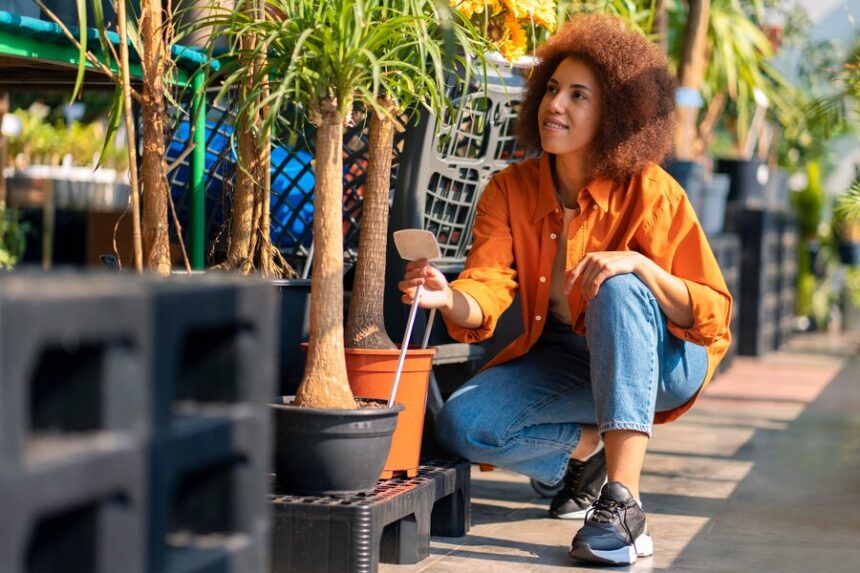Large outdoor planters can transform any space into a vibrant garden area. Choosing the right planter enhances the beauty of plants while providing the support they need to thrive. With so many options available, understanding the materials, sizes, and care requirements is crucial to making the best choice.
When selecting large outdoor planters, the right size and material can impact not only the aesthetics but also the health of the plants. Factors like placement and seasonal care determine how well the planters serve their purpose. Knowledge about soil and compatible plants ensures a flourishing environment.
Creating a stunning outdoor display doesn’t have to be overwhelming. By considering practical aspects, anyone can enhance their outdoor spaces with beautiful large planters that are easy to maintain and enjoy throughout the seasons.
Key Takeaways
- Select planters based on size and material for optimal plant health.
- Placement is key to maximizing sunlight and accessibility.
- Regular maintenance keeps outdoor planters thriving year-round.
Choosing the Right Material for Large Outdoor Planters
Selecting the best material for large outdoor planters is essential for ensuring both durability and aesthetic appeal. The right choice can enhance the outdoor space while lasting through different weather conditions.
Weather Resistance and Durability
Weather resistance is critical when choosing a material for outdoor planters. Certain materials perform better than others in harsh conditions.
- Fiberglass: This is lightweight and resistant to cracking in cold weather. It also doesn’t fade in the sun.
- Metal: Aluminum and stainless steel are durable but can rust if not coated properly. Copper looks great, but it may develop a patina over time.
- Plastic: Lightweight and easy to move, they resist cracking but can degrade under intense sunlight and extreme temperatures.
Choosing a material that stands up to the local climate is vital for longevity.
Aesthetic Appeal and Design Options
The appearance of planters greatly impacts the overall look of an outdoor area. Large outdoor planters come in various styles, shapes, and colors.
- Terra Cotta: Offers a rustic look but can break easily and may require sealing for weather resilience.
- Ceramics: Available in many colors and designs, but they can be heavy and fragile.
- Fiberglass: Can mimic other materials while being lighter and more durable.
Selecting the right design will enhance the visual interest and complement the landscape. Matching planters with the decor and overall theme ensures a cohesive outdoor design.
Size and Placement Considerations
Choosing the right size and placement for large outdoor planters is essential for creating a balanced and appealing space. It involves understanding how the planters will interact with the surrounding environment and ensuring their mobility.
Spatial Layout and Planter Scale
When considering planter size, it is important to think about the spatial layout. In a large garden or patio, big planters can serve as focal points. If the area is spacious, larger planters can create a sense of grandeur.
Key Factors:
- Proportion: Large planters can overwhelm smaller spaces. Aim for a balance where the planter complements the surroundings.
- Arrangement: Placing planters in groups can enhance visual interest. Use a mix of planter sizes to create depth.
Examples:
- In a small courtyard, two medium-sized planters may be more effective than one large one.
- For expansive gardens, a grouping of large planters with tall plants can define different areas.
Weight and Mobility Issues
Weight is another critical factor to consider. Large planters can be heavy when filled, making them difficult to move. This affects both placement and plant selection.
Considerations:
- Choose Appropriate Materials: Materials like fiberglass or lightweight resin can ease mobility while still providing durability.
- Drainage: Ensure planters have proper drainage. Waterlogged soil adds weight, causing instability.
Strategic Tips:
- Use rollers or a dolly to move heavy planters if needed.
- Place planters in their final position before planting to avoid unnecessary relocation.
By paying attention to scale and weight, one can ensure that large outdoor planters enhance the beauty and functionality of the outdoor space.


